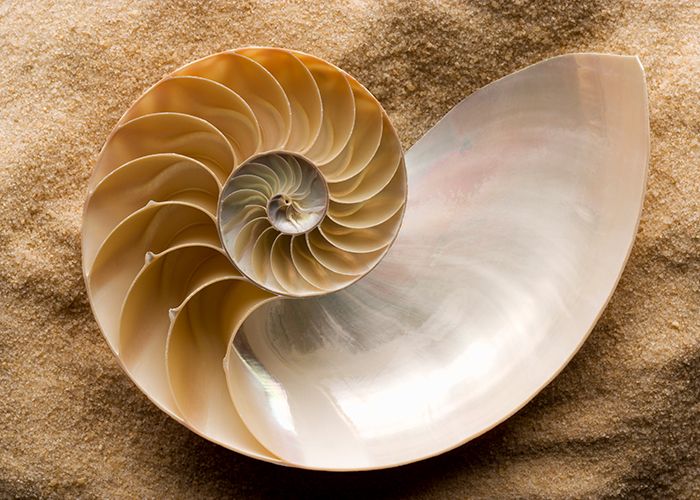Secret Behind Ancient Ammonoids’ Elaborate Shells With Fractal-Like Geometry Revealed
Ammonoids are a group of extinct marine mollusk animals that are now an iconic fossil group often collected by amateurs. Over 350 million years of evolution, ammonoids developed increasingly elaborate shells with fractal-like geometry. For nearly 200 years, scientists have debated the reason why these animals show a trend of increasing complexity in their shell structures.

Paleontology researcher holding a beautifully preserved ammonite recovered from a coastal location. Credit: Adobe Stock – Microgen
Dr. Robert Lemanis and Dr. Igor Zlotnikov from the B CUBE–Center for Molecular Bioengineering at TU Dresden created mechanical simulations of theoretical and computed tomography-based models to unveil a potential explanation: the intricate architecture of these shells may have been nature’s ingenious defense strategy against a wide array of predators.
“Over the course of 350 million years of evolution, ammonoids repeatedly evolved shells with increasingly complex inner walls. The persistence and repetitiveness of this trend imply some driving force; the question that has long remained unanswered is: What driving force? Opposition to water pressure, muscle attachments, respiration, Cartesian devils. All of these have been proposed as explanations for this trend but evidence for them is scarce. So we decided to explore a neglected idea,” explains Dr. Robert Lemanis, researcher in Dr. Zlotnikov’s group at the B CUBE.
The team’s findings propose a fascinating correlation between the evolving complexity of the ammonoid shell and its resilience against external forces. As these ancient creatures roamed the oceans, their shells shielded them against predators and other environmental factors. The intricate inner structures provided crucial reinforcement, making it progressively harder for predators to crack them.

“Consider that the ammonoid shell was a relatively thin structure and once it was fractured, the animal could not repair it. A robust shell—one that can resist the damage—provided higher chances of survival,” explains Dr. Lemanis.

A Kosmoceras ammonite fossil. A CT scan render. Credit: Robert Lemanis
In essence, the shell’s evolution could be a story of survival against the odds. Through countless years of adaptation and innovation, these ancient creatures crafted their defenses with remarkable precision. This new insight from the B CUBE researchers offers us a glimpse into the distant past, where the beauty of nature intertwines with the relentless pressures of survival.

“Our work bridges biology and engineering, underscoring how animals harness the power of fractal morphology to design more robust biomaterials. It can provide inspiration for resilient structural designs,” summarizes Dr. Zlotnikov, research group leader at the B CUBE.
Related Post
A shocking documentary proves that mermaids do exist
SHOCKING Revelation: Thuya, Mother of Queen Tiye, Was the Grandmother of Akhenaten and Tutankhamun—What Ancient Egyptian Secrets Did She Leave Behind?
Breaking News: Astonishing Discoveries at Karahan Tepe Confirm an Extraterrestrial Civilization is Hiding on Earth, and NO ONE Knows!
Breaking News: Researchers FINALLY Discover U.S. Navy Flight 19 After 75 Years Lost in the Bermuda Triangle!
NASA’s Secret Investigation: Uncovering the Astonishing Mystery of the UFO Crash on the Mountain!
Explosive UFO Docs LEAKED: Startling Proof That Aliens Ruled Ancient Egypt!